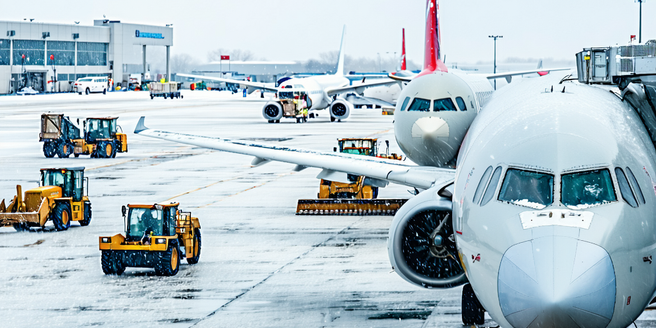
Understanding Freezing Rain and Its Formation
Freezing rain is a type of precipitation that occurs under specific atmospheric conditions. It forms when snowflakes fall through a warm layer of air at mid-altitude, melting into rain. As this rain continues to fall, it encounters a layer of subfreezing temperatures near the surface, causing it to supercool without freezing immediately. This delicate balance of temperatures is crucial for the occurrence of freezing rain. Upon impact with cold surfaces, this supercooled water freezes on contact, leading to the formation of a glaze of ice. This phenomenon typically occurs during winter storms and creates hazardous conditions not only on roads but also significantly impacts aviation, building up ice on aircraft surfaces which can affect flight performance.
The Impact of Freezing Rain on Aircraft
Freezing rain poses a formidable challenge to aviation safety. When an aircraft flies through supercooled rain droplets, ice can rapidly accumulate on wings, fuselage, and control surfaces. Even a small amount of ice on the wings can increase drag and alter airflow, compromising lift, and potentially leading to a stall. The severity of the situation necessitates swift and effective de-icing procedures on the ground and in the air. The added weight of ice further affects the aircraft’s balance and performance, requiring pilots to use additional power and change flight dynamics. If not properly managed, ice buildup can also hinder visibility from the cockpit and interfere with essential sensors. This is why understanding and forecasting freezing rain conditions is critical for maintaining safe flight operations.
Deicing Techniques: Ensuring Safe Flight
To counteract the dangers of ice accumulation, deicing techniques are employed both on the ground and in-flight. Ground-based deicing involves spraying aircraft with heated glycol-based fluids to remove or prevent ice buildup before takeoff. This process is crucial for ensuring that all critical surfaces, such as the wings and tail, are clear of ice. Regular maintenance checks are essential to ensure deicing equipment functions effectively. In-flight, aircraft are equipped with deicing systems such as heated leading edges and inflatable boots on wings, which prevent ice from forming or allow it to break off. Pilots are also trained to adjust flight paths and altitudes to avoid known icing conditions, emphasizing the importance of proactive planning and technology in aircraft safety.
Tools and Equipment Used in Aircraft Deicing
Aircraft deicing involves a range of specialized tools and equipment to ensure effective ice removal. At airports, deicing trucks equipped with extendable booms and spray nozzles dispense glycol-based deicing fluids. These vehicles are critical for reaching high and difficult-to-access areas on aircraft. Modern advancements in deicing technology have made the process more efficient and environmentally conscious. Additionally, infrared deicing systems use radiation to melt ice, providing an environmentally friendly option. In regions prone to freezing rain, hangars fitted with radiant heaters ensure pre-flight deicing. Onboard equipment includes heated surfaces, such as wing edges and engine inlets, which use electricity or bleed air to maintain critical aerodynamics during flight. This arsenal of tools allows for precise and timely deicing, minimizing delays and enhancing safety.
Challenges and Innovations in Aircraft Deicing
Deicing aircraft efficiently remains a challenge due to environmental concerns and the need for timely operations. Traditional glycol-based fluids, while effective, pose environmental risks due to runoff. As a result, airports are increasingly adopting eco-friendly deicing practices. This has led to innovations such as the development of more sustainable, biodegradable fluids. Technological advancements also include more precise application methods to minimize waste and automated deicing systems, which reduce reliance on manual operations. The integration of advanced weather forecasting tools helps in anticipating freezing rain events, allowing for better preparedness. The aviation sector is balancing operational efficiency with ecological responsibility. Moreover, research continues into developing more energy-efficient onboard deicing systems, signifying the industry’s commitment to enhancing safety while reducing environmental impact.
